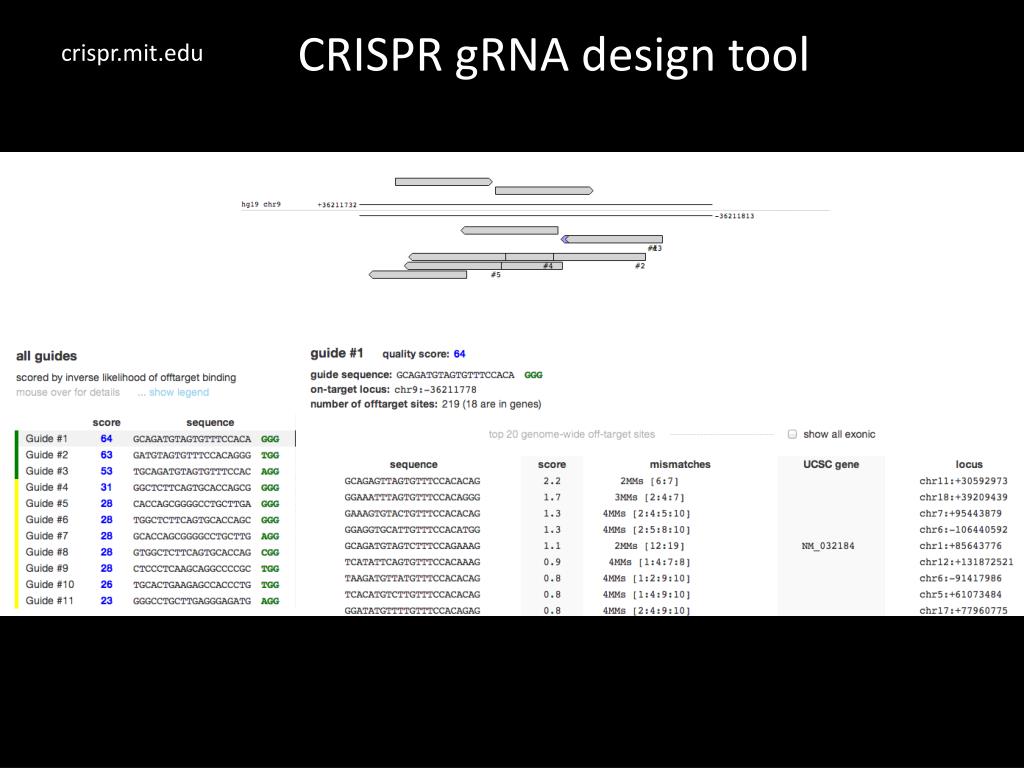Precise Gene Editing: The Latest Advancements In CRISPR Modification

Table of Contents
Enhanced Specificity and Targeting in CRISPR-Cas Systems
One of the major challenges in using CRISPR technology is the occurrence of off-target effects – unintended edits at locations other than the desired target gene. These off-target effects can lead to unpredictable consequences and limit the therapeutic applications of CRISPR. However, significant advancements have been made to improve the specificity and targeting of CRISPR-Cas systems.
-
Improved guide RNA design and screening methods: Researchers are developing sophisticated algorithms and high-throughput screening methods to design guide RNAs (gRNAs) that bind with higher affinity and specificity to the target DNA sequence, minimizing off-target effects. This includes incorporating machine learning to predict and avoid potential off-target sites.
-
Development of high-fidelity Cas enzymes: Modified versions of the Cas9 enzyme, such as SpCas9-HF1, have been engineered to exhibit significantly reduced off-target activity while retaining high on-target efficiency. These high-fidelity Cas enzymes represent a major step towards safer and more precise gene editing.
-
Utilizing paired nickases to reduce off-target cuts: Instead of using a single Cas9 enzyme that creates a double-stranded break, researchers employ paired nickases, each targeting a different strand of DNA. This approach significantly reduces off-target cleavage by requiring two simultaneous cuts for a successful edit.
-
Base editing technologies: Base editors, such as ABE (adenine base editor) and CBE (cytosine base editor), enable precise single-base modifications without creating double-stranded breaks. This approach minimizes off-target effects and allows for targeted changes in specific nucleotides. Studies have shown significantly improved precision compared to traditional CRISPR-Cas9 methods. For example, a study published in Nature demonstrated the successful correction of a pathogenic mutation in a disease model using ABE with high efficiency and minimal off-target effects.
CRISPR-Based Therapeutics: From Bench to Bedside
The potential of CRISPR technology for therapeutic applications is immense, and the field of CRISPR therapeutics is rapidly advancing. Numerous clinical trials are underway, testing CRISPR-based therapies for a variety of diseases.
-
Treatment of genetic blood disorders: Significant progress has been made in treating genetic blood disorders like sickle cell anemia and beta-thalassemia using CRISPR-Cas9 gene editing. Clinical trials have shown promising results in correcting the genetic defects responsible for these diseases.
-
Cancer immunotherapy using CRISPR-engineered T cells (CAR-T cells): CRISPR technology is being used to engineer T cells, a type of immune cell, to more effectively target and eliminate cancer cells. This approach shows considerable promise in improving the efficacy of CAR-T cell therapy.
-
Gene therapy for inherited retinal diseases: CRISPR-based gene therapy is being explored as a potential treatment for inherited retinal diseases, aiming to restore vision in patients affected by these conditions.
Despite the remarkable progress, translating CRISPR technology into clinical settings presents challenges. These include ensuring efficient and safe delivery of CRISPR components, addressing potential off-target effects, and managing the long-term effects of gene editing. Careful consideration of ethical implications is also crucial.
Advanced CRISPR Delivery Methods
Efficient and targeted delivery of CRISPR components to the desired cells or tissues is essential for the success of gene editing therapies. Advancements in delivery methods are playing a vital role in enhancing the precision and effectiveness of CRISPR modification.
-
Viral vectors: Viral vectors, such as adeno-associated viruses (AAVs) and lentiviruses, are widely used for delivering CRISPR components into cells. AAVs are particularly attractive due to their safety profile and ability to transduce a variety of cell types.
-
Non-viral delivery methods: Non-viral methods, including lipid nanoparticles and electroporation, offer alternatives to viral delivery. These methods can be less immunogenic and more scalable for large-scale production.
-
Targeted delivery systems: Researchers are developing targeted delivery systems to improve the efficacy and reduce off-target effects of CRISPR. These systems aim to deliver CRISPR components specifically to the intended cells or tissues, minimizing off-target edits and improving therapeutic outcomes. For example, using ligands that bind specific cell surface receptors to target the delivery system to particular cell types.
Advancements in delivery methods are improving the precision and effectiveness of gene editing by ensuring that CRISPR components reach the target cells efficiently and with minimal off-target effects.
CRISPR and Genome Engineering Beyond Human Health
The applications of precise gene editing extend far beyond human health. CRISPR technology is transforming various fields:
-
Agriculture: CRISPR is being used to improve crop yields, enhance nutritional value, and develop pest-resistant varieties, leading to more sustainable and efficient agriculture.
-
Biofuel production: CRISPR-based genome engineering is being employed to enhance the efficiency of biofuel production from various sources, contributing to the development of renewable energy alternatives.
-
Industrial biotechnology: CRISPR technology is used to engineer microorganisms for various industrial applications, such as producing pharmaceuticals, biomaterials, and other valuable compounds.
However, the use of CRISPR in these contexts raises important ethical considerations, particularly regarding unintended environmental consequences and the potential for unforeseen effects on ecosystems. Careful ethical analysis and regulation are crucial to ensure responsible development and application of this powerful technology.
The Future of Precise Gene Editing with CRISPR Modification
Significant advancements in CRISPR technology have dramatically improved the precision of gene editing. The development of high-fidelity Cas enzymes, improved guide RNA design, base editing technologies, and advanced delivery methods are contributing to safer and more effective gene editing strategies. The potential of CRISPR for treating genetic diseases and improving human health is enormous, with ongoing research exploring new applications and further enhancements to precision. The future of CRISPR holds incredible promise. To learn more about the exciting progress in precise gene editing and CRISPR modification, explore leading scientific journals and research institutions. This revolutionary technology continues to reshape medicine and numerous other sectors, and understanding its advancements is crucial for engaging in its responsible development and application.

Featured Posts
-
 A Locals Guide To The Best Paris Neighborhoods
May 30, 2025
A Locals Guide To The Best Paris Neighborhoods
May 30, 2025 -
 Awstabynkw Njmt Almlaeb Altrabyt Alsaedt
May 30, 2025
Awstabynkw Njmt Almlaeb Altrabyt Alsaedt
May 30, 2025 -
 Kampania Mentzena Na Wybory Prezydenckie 2025 Nowe Podejscie
May 30, 2025
Kampania Mentzena Na Wybory Prezydenckie 2025 Nowe Podejscie
May 30, 2025 -
 French Open 2024 Sinner And Djokovic Face Tough Competition
May 30, 2025
French Open 2024 Sinner And Djokovic Face Tough Competition
May 30, 2025 -
 Musettis Dominant Victory Auger Aliassime Defeated In Straight Sets At Miami Open
May 30, 2025
Musettis Dominant Victory Auger Aliassime Defeated In Straight Sets At Miami Open
May 30, 2025
Latest Posts
-
 Controversy Surrounds New Beatles Cast Understanding The White Boy Of The Month Criticism
May 31, 2025
Controversy Surrounds New Beatles Cast Understanding The White Boy Of The Month Criticism
May 31, 2025 -
 Beatles Casting Announcement Sparks Debate Examining The White Boy Of The Month Reaction
May 31, 2025
Beatles Casting Announcement Sparks Debate Examining The White Boy Of The Month Reaction
May 31, 2025 -
 The Beatles Cast Revealed A Look At The White Boy Of The Month Controversy
May 31, 2025
The Beatles Cast Revealed A Look At The White Boy Of The Month Controversy
May 31, 2025 -
 Podrobnosti Za Kontuziyata Na Grigor Dimitrov
May 31, 2025
Podrobnosti Za Kontuziyata Na Grigor Dimitrov
May 31, 2025 -
 Vzstanovyavane Na Grigor Dimitrov Sled Kontuziya
May 31, 2025
Vzstanovyavane Na Grigor Dimitrov Sled Kontuziya
May 31, 2025
